Wetting agents can easily pay for themselves when managing turf growing on sand-based or sand-capped soil. These products improve soil moisture uniformity, water infiltration rate and alleviate issues of soil water repellency – called soil hydrophobicity – in sandy soils. Their use in sand-based turf systems can save water, minimize hand-watering hours, and improve turf performance during drought stress. This is why soil wetting agents are a staple of the management of golf putting greens, tees and sand-based athletic fields.
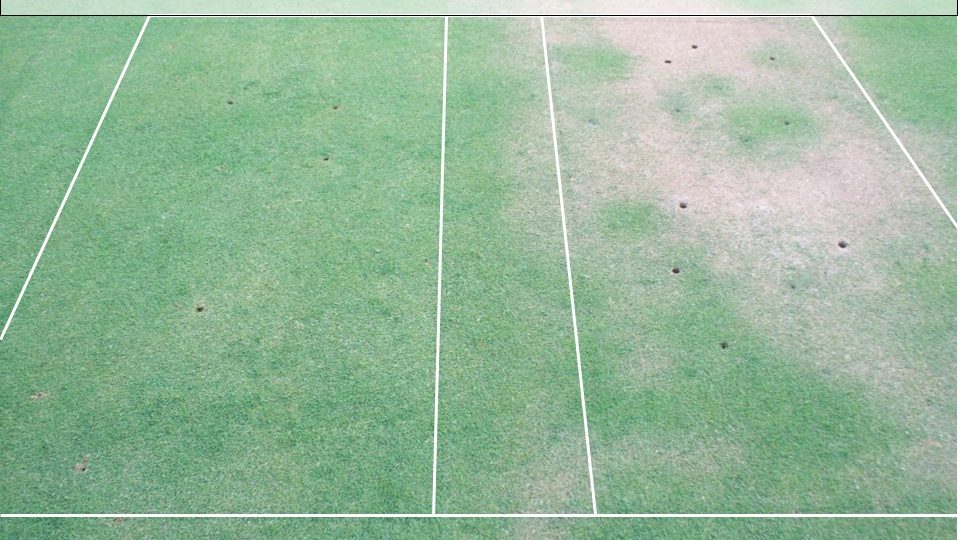
The value of wetting agents is clear in high value turf areas growing on sandy media, but do they have a value in turf growing on native soils? Can large areas like golf fairways, athletic fields, commercial turf areas and lawns growing on soils that are high in silt and clay benefit from these products? A few years back, I applied several commercially available wetting agents to a tall fescue lawn plot and turned off the water. The stand was growing on a silty-clay loam soil and irrigation was applied to the positive control plots manually with a hose. After a summer of data collection, all we proved was that daily irrigation replacement encouraged a lot of brown patch. There were no differences in turf quality or soil moisture status. Case closed? I wasn’t convinced.
The Chore of Re-wetting bentgrass
Creeping bentgrass managers know re-witting the soil after bentgrass has wilted can be a real challenge. Other cool-season grasses like annual bluegrass don’t seem to be as difficult to re-wet as long as the drought didn’t kill the turf. Does the wilting creeping bentgrass enhance soil hydrophobicity somehow? It seems likely. That is another reason preventative wetting agent applications are applied to bentgrass turf growing on sand media. Once localized dry spot develops, the residual wetting agent can help the soil re-wet. Curative applications of most wetting agents are not as effective because they need to penetrate the hydrophobic soils to correct the condition. Usually these curative wetting agents are often mixed with a product like Simplot’s Forté to get them to the root of the problem.
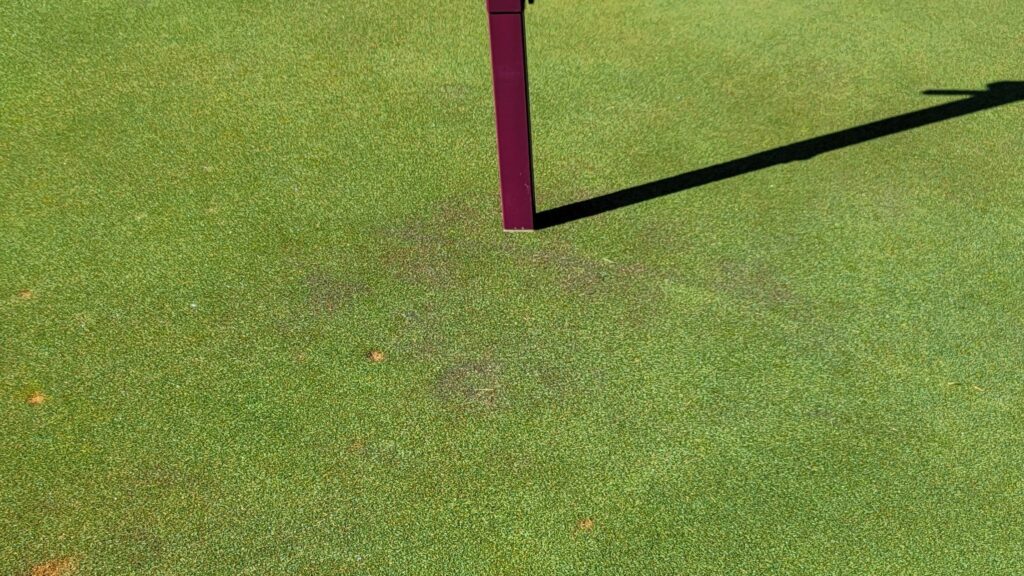
Over the past two years, I’ve been applying CounterAct Firm to the putting greens at Jim Ager Memorial Jr. GC as part of my normal water management program. After an application in June 2021, there was enough spray solution remaining to treat 5,000 square feet of creeping bentgrass fairway. I applied the wetting agent in roughly 12′ wide strips across the fairway. It was tiger stripe style to replicate the treated and non-treated areas. The CounterAct Firm wetting agent was watered-in with roughly 0.1″ of irrigation immediately following the application, and the soil texture was the same silty-clay loam as the failed tall fescue experiment. Would these treatments improve the health of a creeping bentgrass fairway growing on native soil? It was time to find out.
That Looks Odd
The summer stress was starting to kick into full gear, and the center row irrigation system was struggling to meet the water demand. Honestly, I had forgotten about the wetting agent treatments applied across the fourth fairway. But in late July, I was driving down that fairway and noticed an interesting pattern from the corner of my eye. There were suitable stripes running down the fairway. Was that from the wetting agent? Some stripes looked normal with a healthy green color and fine leaf texture. The alternate stripes didn’t display obvious symptoms of drought stress, but they were slightly off color. The dew wasn’t as heavy and the drier plots seemed scalped and even puffy. I reviewed the spray log in our Frost VRT sprayer, and confirmed that the stripes corresponded to the application of CounterAct Firm in June.
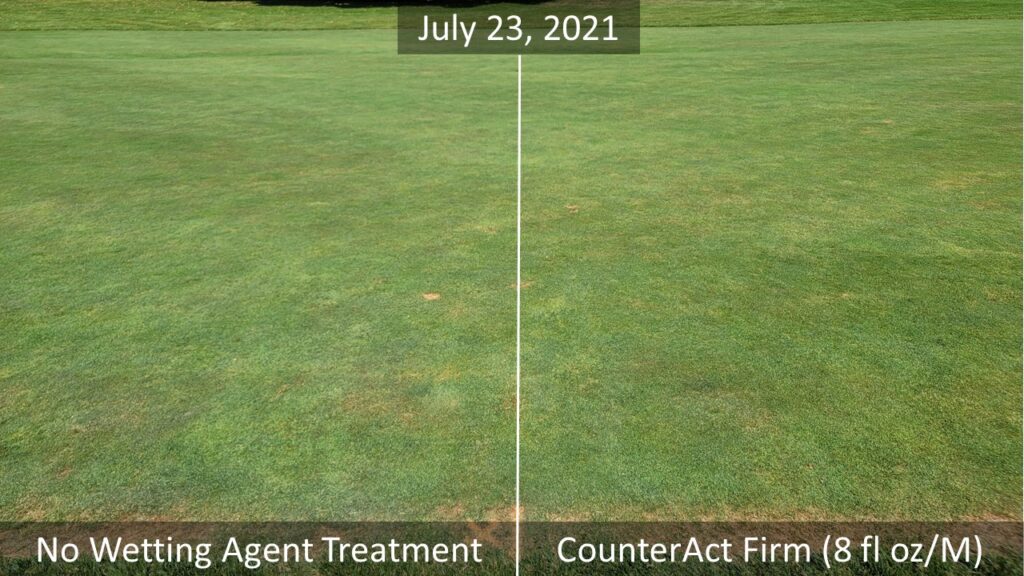
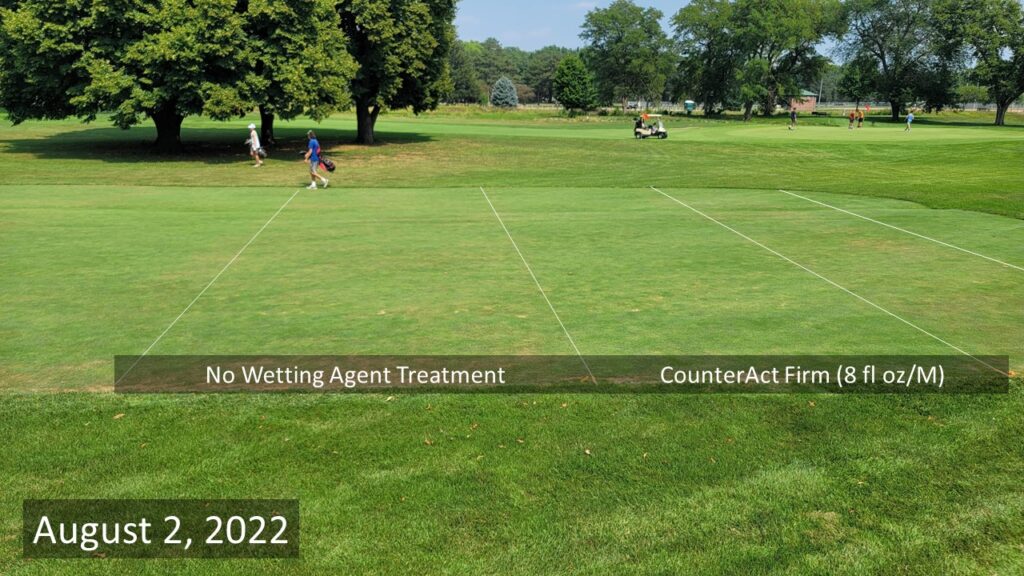
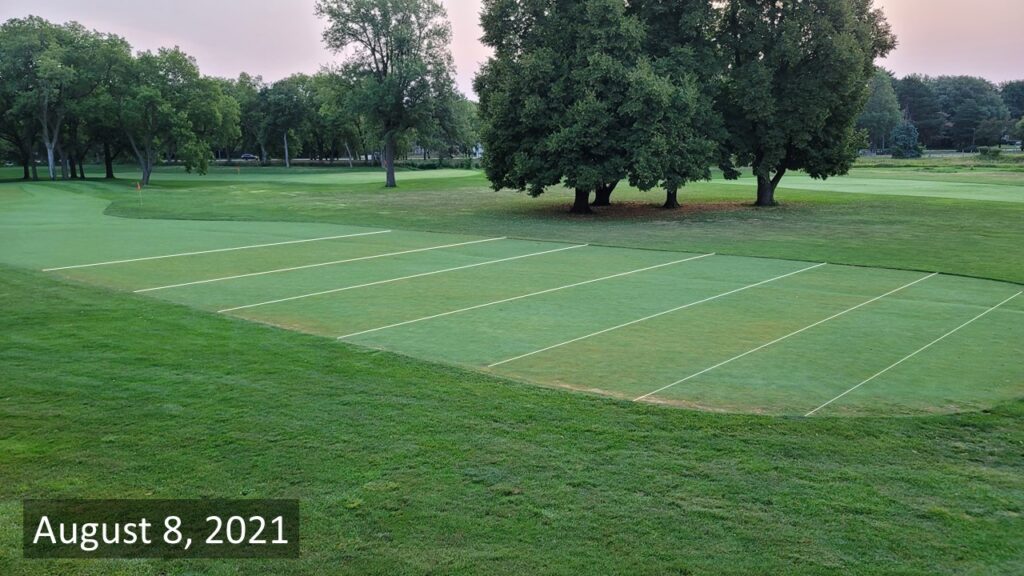
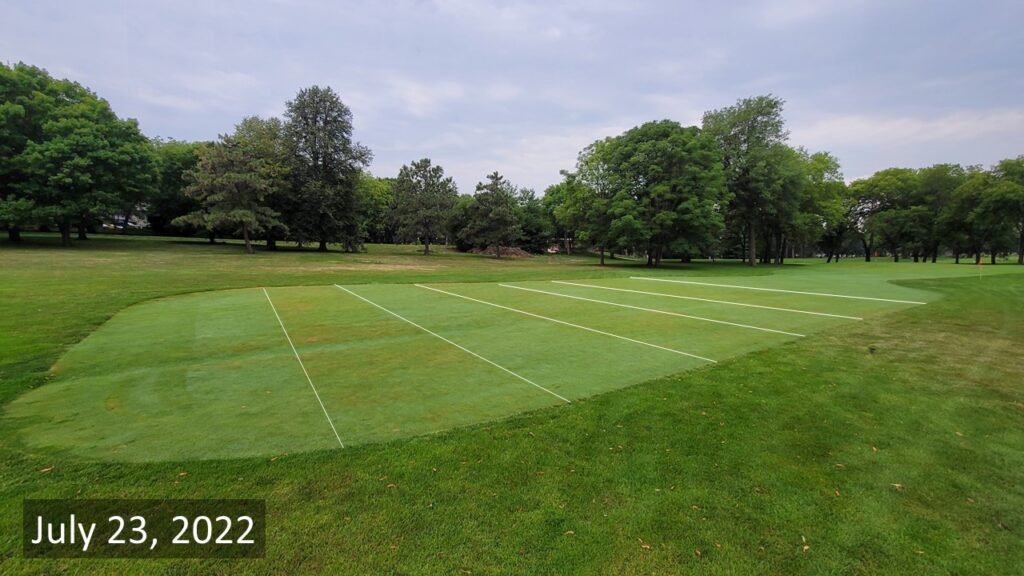
It was obvious that the wetting agent was having a positive impact on the health of the turf. I made another application of CounterAct Firm in mid-August 2021 and continued to monitor turf health. That was the last application of 2021. A short-lived heat wave in late August continued to stretch the limits of the single row irrigation system. Symptoms of drought stress intensified across the golf course. An adjusted NDVI drone image of the fourth hole clearly showed the positive effects of wetting agent on the fairway. It was also interesting how the non-treated areas fit the common complaints of creeping bentgrass fairways in the summer. The color was inconsistent, they were scalping and looked puffy, and the uniformity wasn’t great. On the other hand, the treated stripes looked as good as they did in late spring and early fall. Is puffy bentgrass the result of soil water inconsistency in native soils? After two seasons of observations, it seems highly plausible.
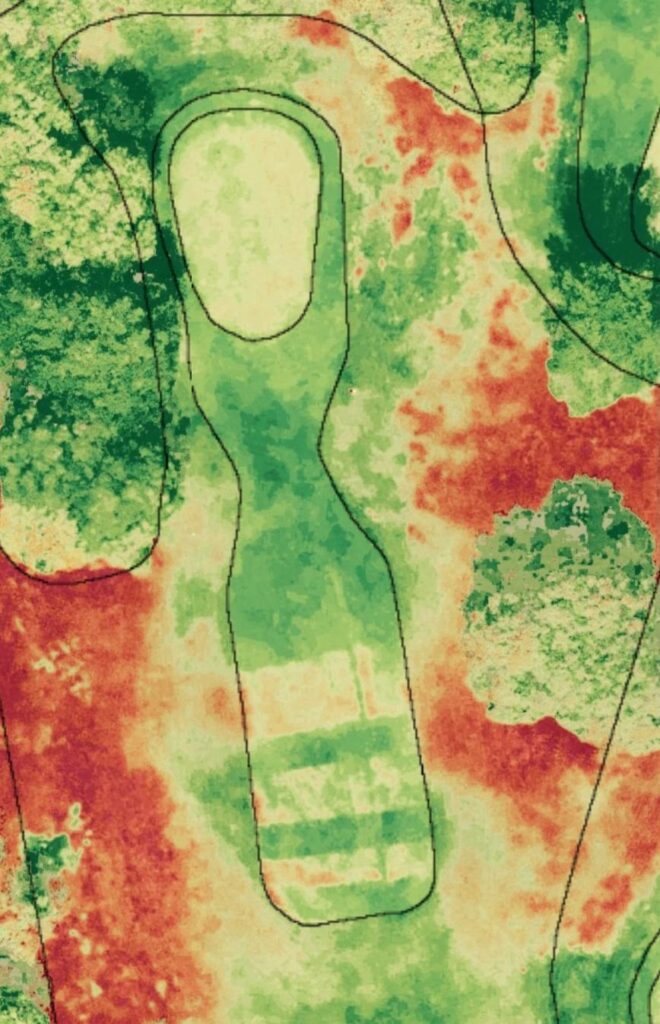
Winter desiccation prevention
The two wetting agent applications from the summer improved turfgrass health and soil moisture uniformity for the remainder or the 2021 growing season. The winter of 2021-22 was very stressful for creeping bentgrass turf in Lincoln, NE. There was little rain or snow, the air temperature was highly variable and it was quite sunny. These provided the perfect conditions for winter desiccation injury in creeping bentgrass. I started studying winter desiccation in 2014 with my first M.S. student, Darrell Michael. We found covers, sand topdressing, and light winter watering were the best ways to combat winter desiccation. Spray applied treatments, like wetting agents or pigment, in mid-November did little to protect the creeping bentgrass crowns. Then the fourth fairway at Ager GC surprised me again. Stripes that received wetting agent during the summer of 2021 had much less winterkill than the non-treated areas. This result showed how important access to soil water was in the fall. Mid-November applications of wetting agents were likely too late to help. Applications needed to be applied when the grass is still growing to help it harden off for winter stress.
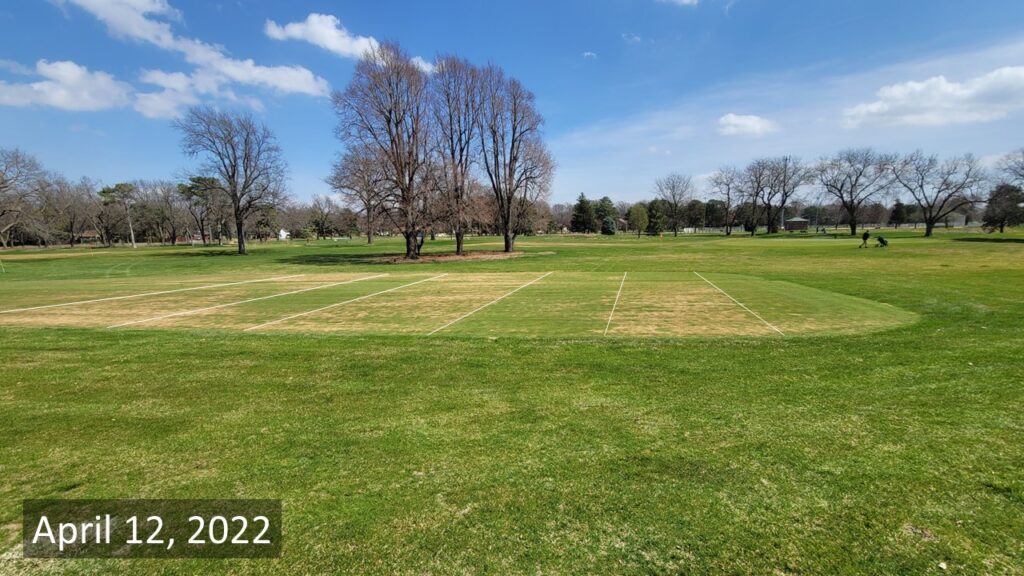
Same Story in 2022
It’s always good to replicate research over a couple growing seasons. This study didn’t disappoint. Treated areas has better turfgrass quality during the growing season. We measured soil moisture on a grid during 2022 to verify there were real differences between treatments. The areas without the wetting agent had both the wettest and driest volumetric soil water content values while the strips treated with CounterAct Firm had much less variability. The turf quality across the non-treated stripes was also highly variable a small scale (within a few square feet) and larger scale (across the width of the plot). The benefits of the wetting agent on this high clay soil were extremely clear.
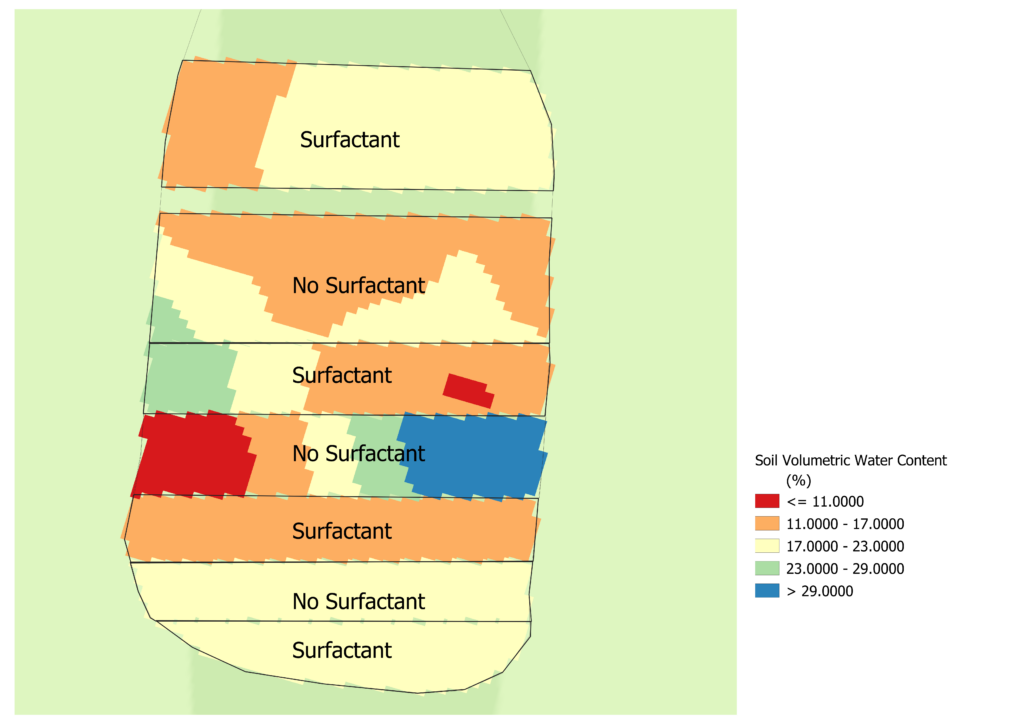
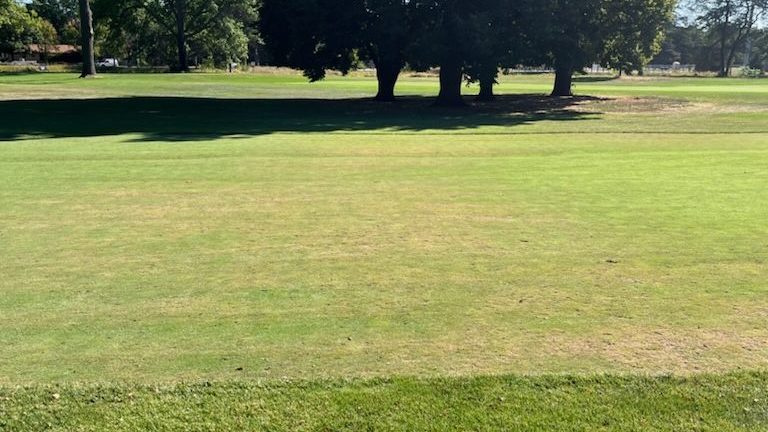
Do Wetting Agents Help Fairway Turf?
Yes, on creeping bentgrass fairways, a wetting agent program can improve irrigation efficiency and improve plant health. Wetting agents also minimized the mid-summer puffy/scalped look that is commonly observed with creeping bentgrass. While I’d recommend a season-long programmatic approach to wetting agent applications, a mistake application in late July 2022 showed that curative applications can also help correct issues (see image below).
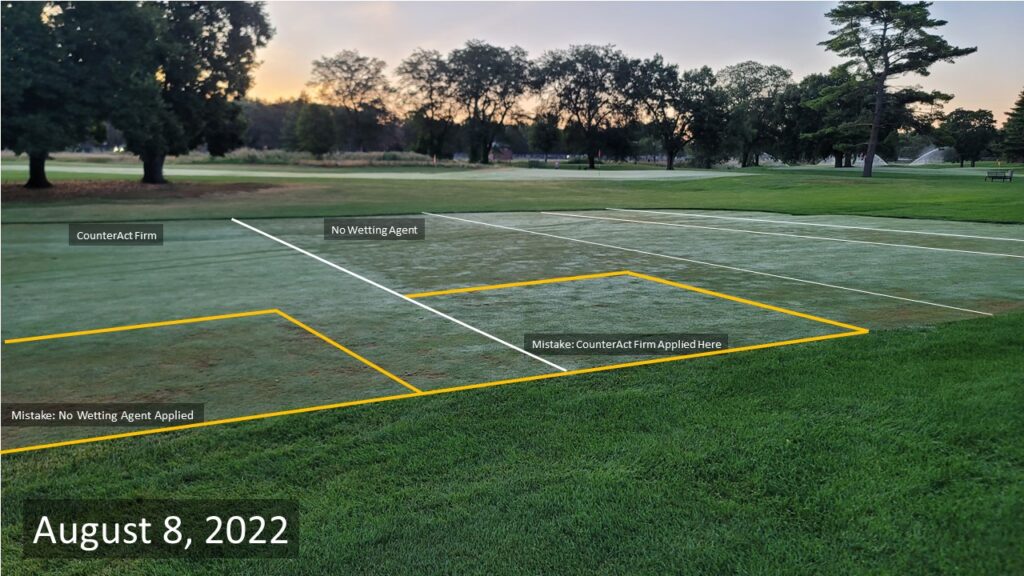
The fairways at Ager GC are now on a regular wetting agent program. It has allowed me to reduce irrigation and maintain better turf quality. There is always room for more research. Do wetting agents help on Kentucky bluegrass, bermudagrass, or perennial ryegrass fairways? How do different types of wetting agents help creeping bentgrass fairways? I don’t know, but you can easily find out. Mix up some extra wetting agent for your next greens app., grab a can of marking paint, and make your own stripes across a fairway. This type of on-course research has me convinced that wetting agents are an important piece of creeping bentgrass fairway management.

